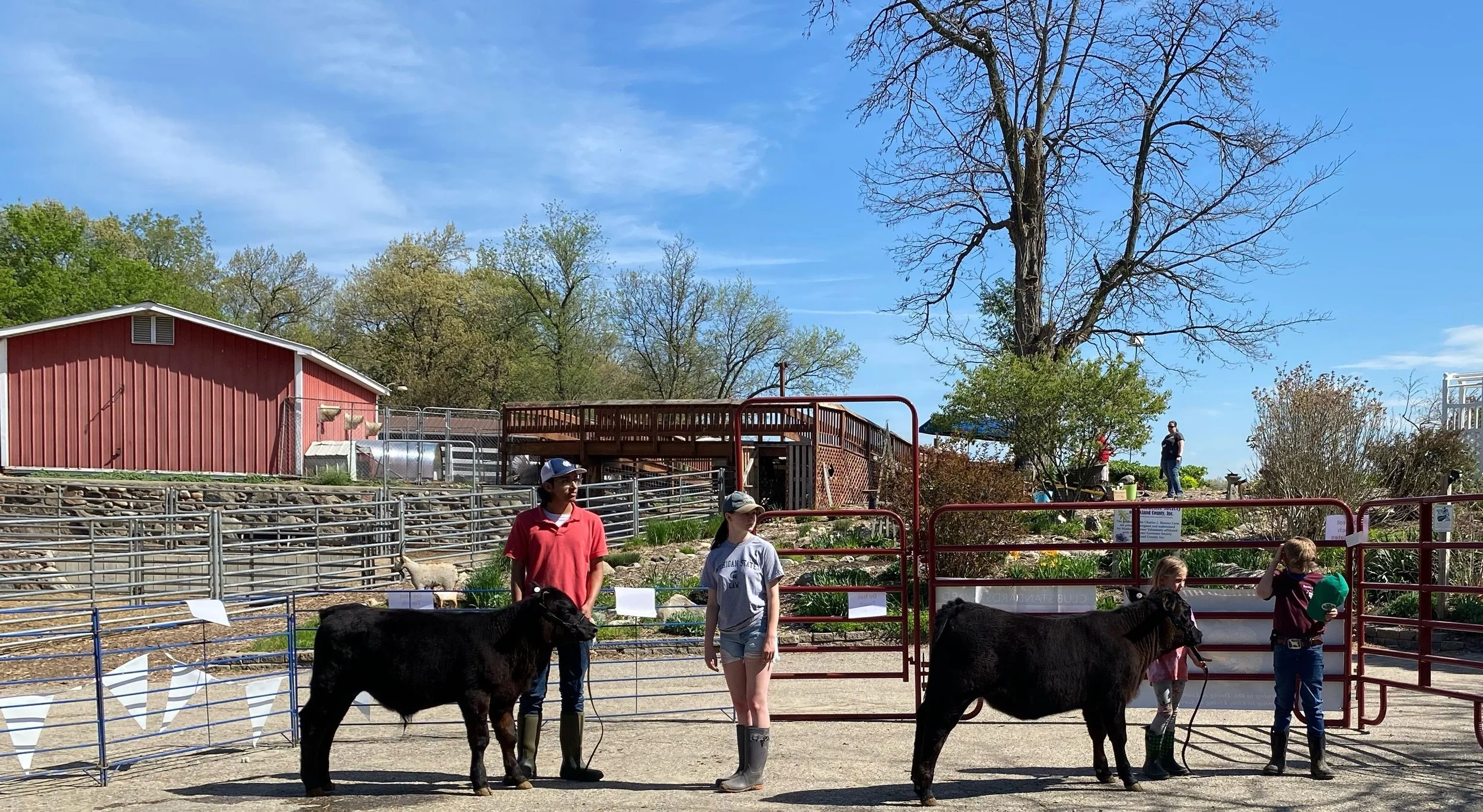Animal Showmanship through 4H and FFA
Written by: Kate Bell
Curious about what the kids are doing with their animals?
We get it—it might look a little unusual at first! If you’re used to seeing pets like dogs and cats, working with livestock can seem very different. Here’s a glimpse into what’s going on and why it matters.
Why Show Livestock?
Livestock projects are not very common in many communities, especially in our neck of the woods, which is why we’re excited to open the barns and give visitors a closer look. When young people prepare and show animals, they gain far more than ribbons. These experiences teach responsibility, patience, sportsmanship, time management, confidence, and respect for both animals and people. The learning is deep and lasting. [Read more HERE.]
What is Showmanship?
Livestock projects, often part of 4-H, FFA (Future Farmers of America), and agricultural education programs, are powerful learning tools. These projects teach youth how to responsibly raise, care for, and present animals. Along the way, they build essential life skills—responsibility, patience, sportsmanship, organization, confidence, and respect for both animals and people.
Through school-based ag programs, summer clubs, or independent work, students dedicate months to preparing their animals for the show ring. These projects are often considered "market projects," which means the animal is being raised with the intention of being sold at a fair or auction. This adds another layer of responsibility and economic understanding—students track expenses, learn about budgeting, and develop a personal connection to the food system. [Read more on Beef Showmanship HERE.]
What Are They Doing?
Washing & Drying:
Clean animals are happy and healthy animals. Bathing and drying help keep the skin and coat in good condition, just like hair care for people. In the show ring, appearance matters, and consistent grooming supports animal health.
Leg Wraps:
You might notice colorful leg wraps, especially on sheep. These protect the wool from dirt, chewing, or rubbing after a bath, so it stays clean and fluffy for the show.
Clipping:
Animals often get a haircut before a show! Trimming enhances their features and ensures they look their best—think of it like getting ready for a big event.
Tied Up? Here’s Why:
It’s common to see animals tied up during training. This helps them build patience and comfort being still—an essential skill for the show ring. Time spent in this practice is carefully monitored, often accompanied by music to simulate busy show environments. Trained adults are always nearby, even if you don't immediately see them.
At its heart, this is education in action.
Whether part of a 4-H club, FFA chapter, or school agriculture class, these students are learning far beyond the barn. They’re gaining career readiness, personal growth, and a deep respect for animals and agriculture. Thank you for taking the time to learn more and support the next generation of agricultural leaders. They depend on our support - both financially and personally - cheering for them, asking them questions, offering donations OR EVEN BETTER, consider purchasing their project at the Oakland County Fair this summer! Soon, each one will be responsible for creating a buyers letter to share their WHY and seek sponsorship.



